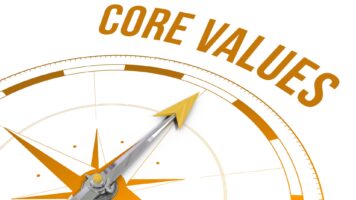5 Musts for Being Mindfully Present

Personal Development
June 2, 2016
Scott Mautz
Keynote Speaker, Author, & CEO of Profound Performance
Topics
Focus, mindfulnessWe’ve all been there – when you are there but you’re not really there. You may be physically present but your mind and energy are elsewhere.
Believe me, people all around you notice.
And it happens far too often. A Harvard study showed that our minds are not focused on what’s in front of us a whopping 47% of the time, and in these times, our happiness level is at its lowest – a wandering mind is not a happy mind.
Babies have it figured out, believe it or not. Ever notice how charismatic babies are, how they seem to capture the room with their presence, without uttering a word? Psychologists will tell you it’s not because of their magnetic personality, which isn’t even fully formed yet. And set aside their cuteness, which is only part of it. It’s because of how present they are in the moment, wide-eyed and fully engaged in everything that’s right in front of them. There is something undeniably magnetic about someone who is giving 100% attention to what’s in front of them in the here and now.
It’s no different for leaders – you too can be just as magnetically present.
When you are, you carry light with you everywhere you go. People are drawn to you, but more importantly their own unique energy is drawn out of them. You become a conduit for the pent up expression of creativity, ideas, and thoughts that so many have buried inside them as they live days of transaction vs. transcendence. The power of human connection kicks in and words, gestures, and facial expressions become emotional glue, not mere by-products of going through the motions. Each encounter offers the opportunity to unlock greatness.
But, as with prizes at a raffle drawing, to win you must be present.
Now admittedly, it is actually easier to not be present. However, with a little effort and intentionality, you can make your presence a present to those you interact with. Here’s how – 5 musts for being mindfully present:
1) Accept that Multi-tasking is a Myth We sacrifice our power of full presence when we are multi-tasking. Forget for a moment that it can often be incredibly rude; we are not actually accomplishing what we think we are – we fool ourselves. The truth is research indicates multitaskers are actually less likely to be productive, yet they feel more emotionally satisfied with their work, thus creating an illusion of productivity.
In fact, research also shows that multi-tasking, i.e. trying to do two cognitive things at the same time, simply can’t be done – the mind doesn’t work that way. Many people truly fool themselves, mistakenly believing that they are effective at multi-tasking, when in reality what they are good at is what researchers call task-switching.
Earl Miller, a professor of neuroscience at MIT, says that we simply can't focus on more than one thing at a time. Period. But what we can do is shift our focus from one thing to the next with astonishing speed. Says Miller, "Switching from task to task, you think you're actually paying attention to everything around you at the same time. But you're actually not.” The brain is forced to switch among multiple cognitive tasks as these tasks use the same part of the brain. And the catch here is that this task switching, despite how fast it occurs, is incredibly unproductive in reality; research indicates up to 40% of productivity could be lost. It actually takes more time to complete the tasks you’re switching between and you make more errors than when you focus on doing one task at a time in order.
The key is to accept the fundamental fact that the mind can only do one thing at a time. And ditch the device – often the primary co-conspirator in our multi-tasking offenses. Draw a line in the mental sandbox and commit to one thing at a time.
2) Catch the Drift I don’t mean make sure you understand, although that’s always good. I mean make a point to notice when your attention is drifting. Excuse yourself and admit where you are mentally if you have to - faking it is frustrating and people will see through it. Write yourself simple reminders to stay present like “Don’t zone out, zone in," or “Be mindful, not mind full," or “Run your mind, don’t let it run you." Anytime you catch yourself drifting, ask yourself, “What has my attention right now?”
To further stay focused, commit to cease and desist with your inner monologue – simply stop the self-conversation. Or think of those you are interacting with as your customers. You’d never drift off on a customer, for fear of losing an important sale. You can also find an anchor for your thoughts, tethering your mind so it doesn’t wander and you can better focus on the task at hand. For example, one psychotherapist suggests enabling refocusing by slowly breathing through your nose, which induces a relaxation response and helps settle the mind. This is why some martial arts instructors have their students train with a mouthful of water.
Plain and simple, don’t assume future moments are more important than the one you’re in. The only thing that is real is the moment you are actually in – so live it.
3) When Frazzled, Freeze It’s so easy to zone out when you are tired, when you are running into your sixth back to back meeting on something that requires attention. If you find yourself in this spot, don’t let that next meeting get started without freezing for a moment. Ask for a pause, a moment to go get water and clear your head. End the previous meeting a bit early to allow space for this if you’re starting to feel burnt out. If you don’t, once that next meeting starts, you’ll quickly fall behind, and it’s hard to catch up without alerting everyone to the fact that you haven’t been paying attention. Plan for these breathers up front by putting space in between meetings – it will be more efficient and boost the quality of presence in the long run.
4) Feel the Meeting Don’t just passively take in information during a meeting. Notice what’s in front of you – the people, the passions, the emotions, the energy, the intention of the information being transmitted. Observe others for what they are (the good things), not for what you want them to be. Find a memory to take from each meeting, even if a short term one. Research shows that the habit of noticing new things and deeply engaging in the nuances of the present moment puts you emphatically in the here and now. It even reduces aggression because the ego doesn’t come into play as you’re focusing on what’s in front of you, not what it says about you.
5) Send Signals of Absorption When you’re fully present and truly comprehending what others are saying, they’ll know. But it doesn’t hurt to put physical reminder mechanisms in place to help you share and show your full-on presence. Remember to maintain eye contact, nod at important points, stop to clarify, take notes, and openly demonstrate that you are really listening. Such triggers send the right message and help you fully receive messages.
3 ways you can take action on this article:
1) Comment on it and get the conversation going
2) Share this article to help others and build your own credibility
3) Get my free newsletter here for more leadership building insight






Scott,
I needed to hear what you had to say about multi-tasking. I have prided myself on my ability to multitask, but beat myself up over the quality of the work I was doing! Thanks for the push to step away from that behavior!
Page, thx for engaging. I too have had a multi-tasking wakeup call. I still struggle with the temptation but I let what the research clearly says bring me back to a more realistically productive, and present, state.
This is fantastic, Scott. Relevant and actionable. Thank you.
Thank you Amy – I’m glad it was of service to you!
Hi, Scott – as expected, you have shared another well-organized and useful post.
I love this statement: ” … a wandering mind is not a happy mind.”:) What a great way to reinforce the power and benefit of focus.
You really created a comprehensive essay on how our inability to focus can affect our work, our relationships, and our well-being. I was particularly pleased when you mentioned multi-tasking … we need to keep hammering away at the myth that doing more than one thing at a time is positive or productive behavior in the workplace.
All five of your points resonate with me, but number 4 especially so. To me, this speaks to the essence of being fully present in the moment, of noticing and engaging, not just in an interactive way, but in a sense-driven way. This is good stuff:).
John
As always John, thx for your readership. As you point out, number 4 (Feel the Meeting) is powerful. It really changed the game for how I show up at meetings and the signals I was sending.